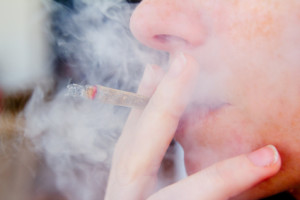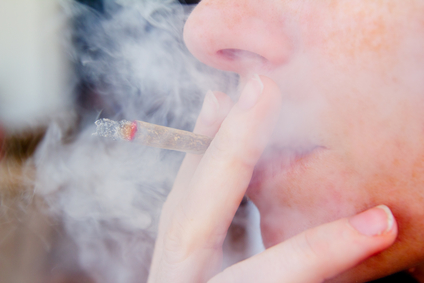
There have been some studies that demonstrate potential medicinal benefits of marijuana use, but they often don’t meet the clinical trial standards used by the FDA to approve medications for human consumption. With the state-by-state movement to legalize marijuana progressing, there is a need for quality scientific research into the potential medical benefits of marijuana. Although marijuana has been used recreationally and medicinally for centuries, the mechanics of how it works are not clearly understood. This is partly because there are over 400 different chemicals in cannabis. THC, the psychoactive ingredient in cannabis, was just isolated in the 1960s. What follows are reviews of some articles that look at the benefits and the concerns with medical marijuana.
Marijuana has been used as a folk medicine as far back in time as five thousand years ago. The first medical use likely occurred in Central Asia and spread from there to China and India. The Chinese emperor Shen-Nung is known to have prescribed it in 2800 BC. Between 2000 and 1400 BC it came to India, and from there to Egypt, Syria and Persia. The Greeks and Romans valued marijuana as hemp for ropes. Europeans ate its seeds and used its fibers to make paper. An urban legend falsely held that the U.S. Constitution, Declaration of Independence, and Bill of Rights were written on hemp paper. All three were actually written on parchment.
An Irish doctor, W. B. O’Shaughnessy, working in Calcutta in the 1830s, wrote a paper on the medical uses of cannabis, which were strikingly similar to those known today—vomiting, convulsions and spasticity. By 1854, the medical use of cannabis was listed in the US Dispensatory. Nineteenth-century physicians had cannabis tinctures and extracts for ailments from insomnia and headaches to anorexia and sexual dysfunction. “Cannabis-containing remedies were also used for pain, whooping cough, asthma, and insomnia and were compounded into extracts, tinctures, cigarettes, and plasters.”
The above short history on the history of medical marijuana was taken from an article by J. Michael Bostwick, “Blurred Boundaries: The Therapeutics and Politics of Medical Marijuana.” He noted how the term medical marijuana refers to botanical cannabis, which contains hundreds of compounds—including the two most often used medicinally, THC and cannabidiol (CBD). Synthetic cannabinoids are produced in a laboratory. Botanical cannabis attracts the notoriety and controversy—because it is the same substance used recreationally by “stoners” to get high.
Bostwick noted how the recreational and medical marijuana use of marijuana is not always distinct, which has medical implications for both seasoned and naïve users. For example, naïve users may decide to stop using medical marijuana because of the psychoactive effects of the THC. Although most users will experience a mild euphoria, a few experience dysphoria, anxiety and even paranoia.
As cannabis strains are bred that amplify THC content and diminish counteracting cannabidiol, highs become more intense but so do degrees of anxiety that can rise to the level of panic and psychosis, particularly in naive users and unfamiliar stressful situations.
The Bostwick article reviewed the often-blurred relationship between medical and recreational users. He discussed a Canadian study that found medical cannabis use often followed recreational use; and that most medical users continued using marijuana recreationally. Another study of 4100 Californians found that medical users preferred inhaling their medication. Smoked cannabis has a more rapid response and is easier to titrate so that users get the analgesic effects without the higher levels favored by recreational users seeking the high. Given some of the medical problems from smoking marijuana, using vaporizers or nasal sprays may be an effective alternative delivery system.
Doctor Robert DuPont, in his book The Selfish Brain: Learning from Addiction, referred to marijuana as “a crude drug, a complex chemical slush.” Marijuana and hashish contain over 420 different chemicals, falling into 18 different chemical families. THC and cannabidiol (CBD), are only two of sixty-one cannabinoids, chemicals found only in the marijuana plant. THC is highly soluble in fats, and this quickly passes the blood-brain barrier. The factor, plus the fact that it is insoluble in water, means that it is trapped in bodily organs like the brain and reproductive glands, remaining there of days or even weeks afterwards.
Grant et al. reviewed evidence on the medicinal usefulness of marijuana in “Medical Marijuana: Clearing Away the Smoke.” They noted that most of the studies on the efficacy and safety of cannabinoids for pain and spasticity have occurred since the year 2000. A series of randomized studies at the University of California Center for Medicinal Cannabis Research (CMCR) found that cannabis significantly reduced pain intensity. A significantly greater proportion of individuals reported at least 30% reduction in pain on cannabis; the threshold of decreased pain intensity generally associated with improved quality of life. Medium doses of 3.5% THC cannabis cigarettes were as effective as higher dose (7% THC).
Oral preparations of synthetic THC (dronabinol, Marinol) and a synthetic THC analogue (nabilone, Cesamet) are legally available. Studies suggest that dronabinol significantly reduces pain. The effects on spasticity are mixed: “there may be no observable change in examiner-rated muscle tone, but patients report significant relief.” There has been less research done with nabilone, but there have been reports of modest analgesia. Dronabinol and nabilone are FDA-approved for control of acute and delayed nausea and vomiting from cancer chemotherapy.
Alternative delivery systems for cannabis include vape-pens, sublingual devices, and others that use a metered spray device. The advantages to such systems seem to be the use of known cannabinoid concentrations, predetermined dosing portions, and time-out systems that may help prevent overuse.
There are side effects, which are dose-related in terms of severity. Grant et al. reported that they seem to decline over time and are of mild to moderate severity. “Reviews suggest the most frequent side effects are dizziness or lightheadedness (30%-60%), dry mouth (10%-25%), fatigue (5%-40%), muscle weakness (10%-25%), myalgia [muscle pain] (25%), and palpitations (20%).” There is little data on a timeline of adverse or therapeutic effects. There have been concerns that rapid tolerance to adverse effects may indicate a corresponding tolerance to beneficial effects. But studies of oral sprays in multiple sclerosis report that you can reduce the incidence and severity of adverse effects by downward self-titration without loss of analgesia.
There are additional adverse effects, including some psychiatric side effects, especially with cannabis having high concentration of THC. See the original article for more specifics. The longer-term health risks of medicinal cannabis are unclear; most of the current evidence is based upon non-medical use. Some medical professionals indicate that effective medicinal use of cannabis requires significantly less marijuana than is typically consumed by recreational users.
In “The Current Status of Medical Marijuana in the United States,” Doctor Gerald McKenna noted how the majority of medical marijuana users in Hawaii claim they have chronic pain. He said a main problem in getting the medical profession to support the use of medical marijuana is that it is not widely used medicinally in a non-smoking form. “Authorizing use by inhalation of a drug with an unknown number of co-drugs contained in the same raw form is not supportable.” He said that supporting the use of medical marijuana by inhalation because users prefer it is akin to supporting the inhalation of any other drug taken orally. His impression is that medical marijuana laws have been passed “to bypass the illegality of marijuana.”
He did recommend removing marijuana from Schedule I controlled substance so research could be done more easily. “Until that research is done, stating that marijuana is useful for treating chronic pain, anxiety, post-traumatic stress disorder, depression, and other health conditions remains anecdotal and conjectural.”
It has become clear that the federal government needs to modify its resistance to reclassifying marijuana’s Schedule I Controlled Substance status to allow more quality research into its use and to fund that research. Otherwise, the current circus of inconsistent regulations from state to state, and unverified claims about the medicinal benefits of marijuana will have us back in the days of patent medicines, as far as marijuana is concerned. Further reflections on medical marijuana can be found in: “Let’s not Get Ahead of Ourselves,” “Is the Cart Before the Horse?” and “Marijuana Peek-a-Boo.”





